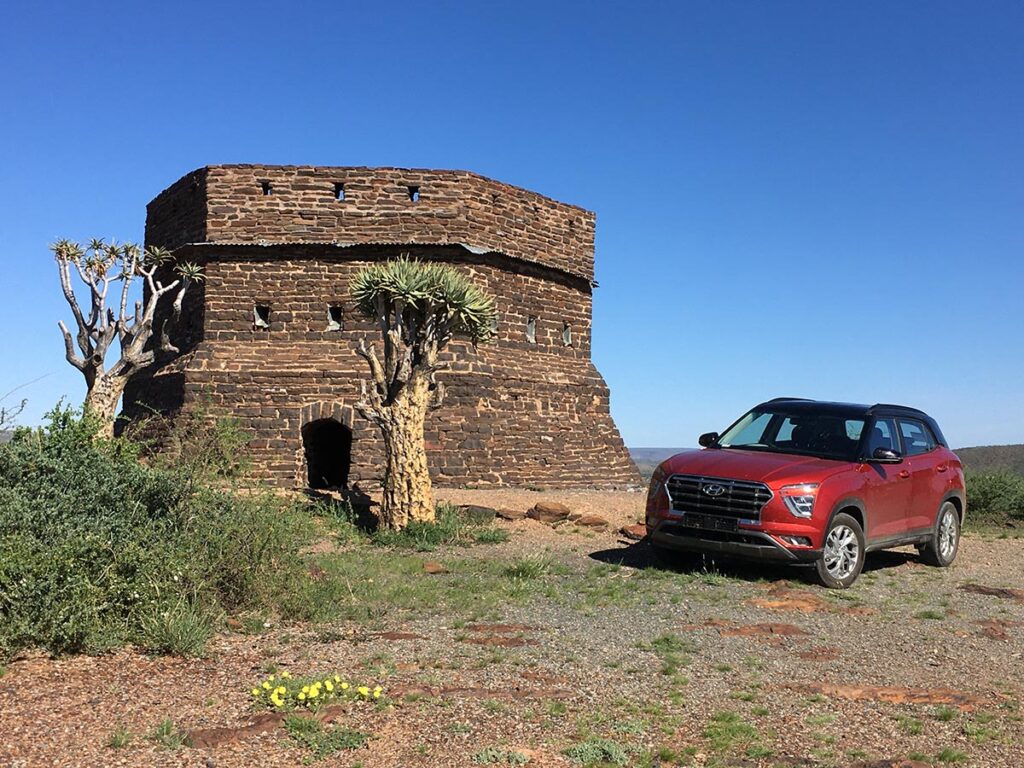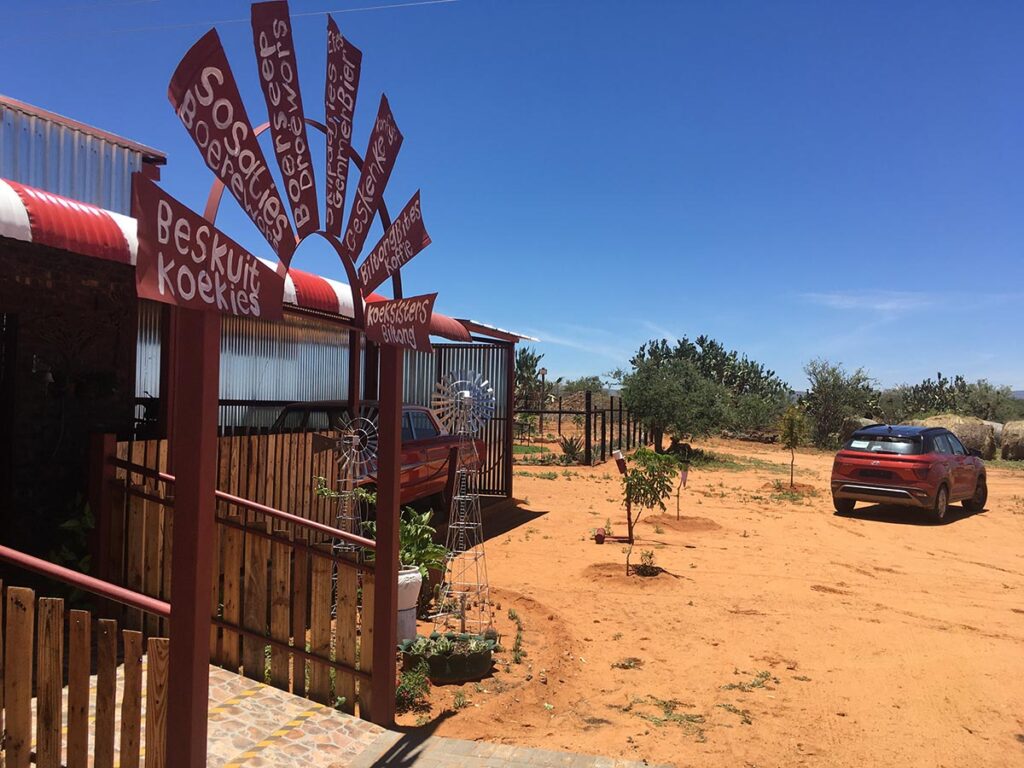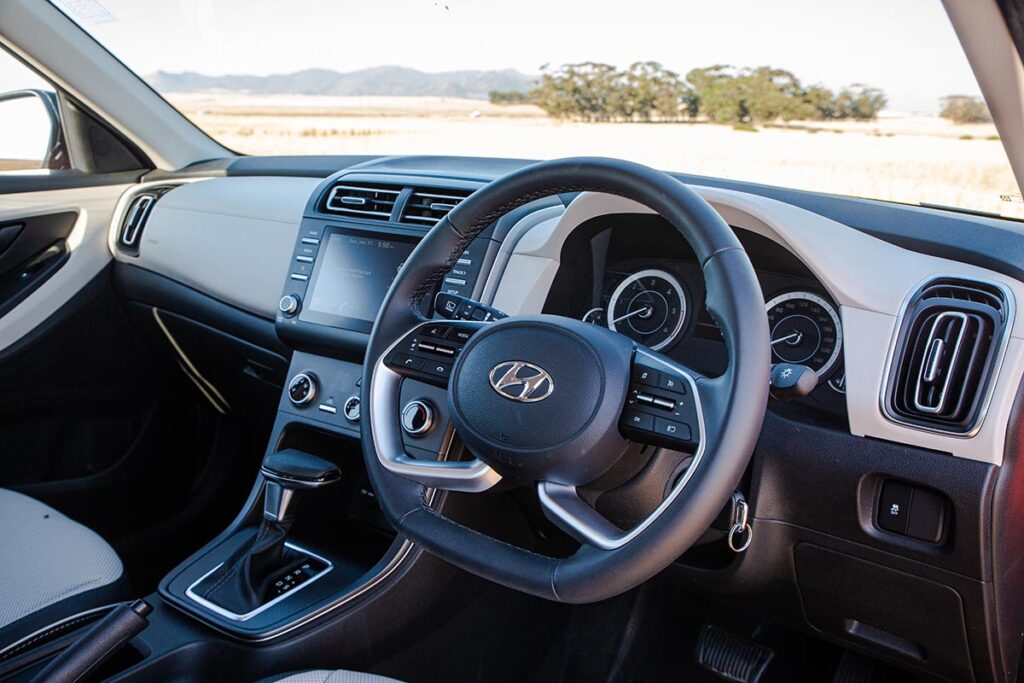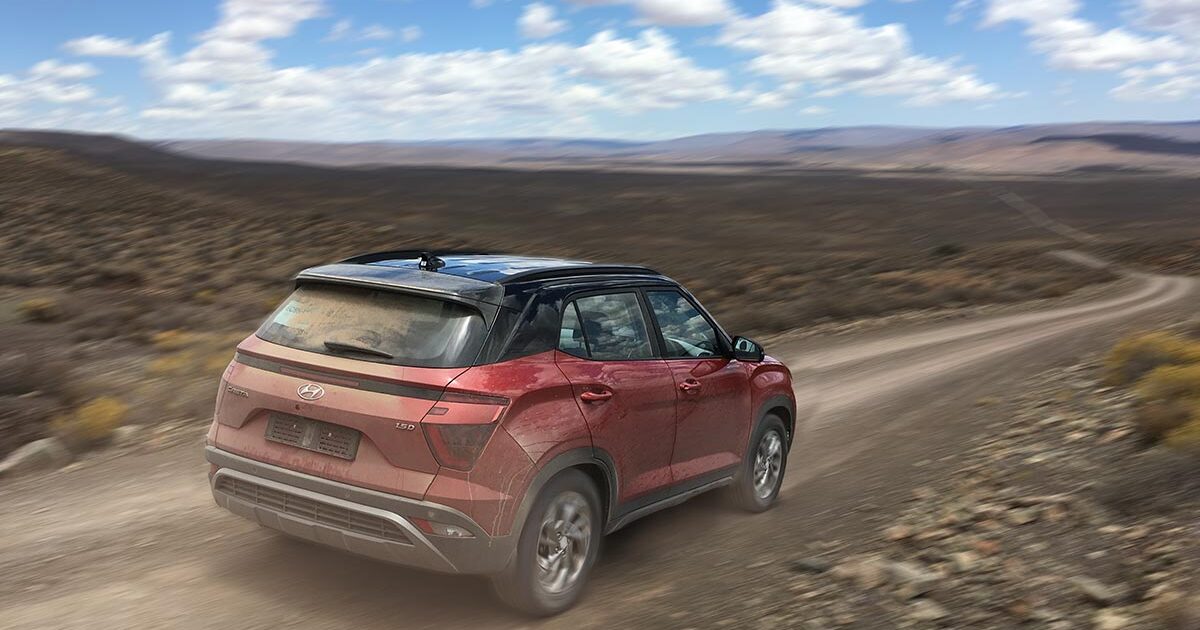The Northern Cape is the largest and most sparsely populated province of South Africa. During the December holiday period Ferdi de Vos traversed the vast expanses of the province and the Orange River (Gariep) running through it in a new Hyundai Creta.
“I see you …!”
The glaring evil eye of the Khi Solar One solar plant tower, becoming brighter as we got closer, “watched” us as we approached Upington on the R27 from the South … and as I looked at the dazzling spire, I could not help but imagine the ominous voice of Sauron from the Lord of the Rings trilogy of Tolkien …
Yes, the huge reflector on top of the 205 meter-high pylon reminds one of the giant flaming eye controlled by the “dark lord” Sauron. Its presence is intimidating, as “the eye” seems to follow you – making you wonder, for a moment at least, if it does not perhaps also have the power to expose your dark inner thoughts …
Khi Solar One (KSO), the first concentrated thermal solar tower plant in Africa, stands like a sentinel over Upington and surrounds, and it can be seen as far as Keimoes. It covers an area of 140 hectares and has a solar field of more than 4 000 heliostats, mirroring solar energy towards a boiler located on top of the central tower.
Still, it is not the biggest solar tower plant in the Northern Cape. No, the KaXu Solar One (KXSO) project, located close to Pofadder, is even bigger, covering an area of 1 100 hectares with a collector surface of more than 800 000 m2.
Just before Keimoes, we turned off onto the R359 towards Kakamas, driving past a myriad of green vineyards and grape farms producing sun-dried raisins and sultanas. We followed the swollen Orange River towards our destination, the town of Augrabies and the Avonsrus guesthouse – an old farmhouse turned into a beautiful cottage by the Conradie family.
Our freshly registered new Hyundai Creta (it was still on paper plates) with its interesting and striking exterior, was dusty and dirty after a journey of more than 850 km. Even so, its two-tone colour scheme and design with traces of the styling DNA of its bigger Tucson and Santa Fe SUV siblings, as well as the smaller Venue, stood out.
The first-generation Creta was an immediate volume-seller since its launch in 2017 and in total 14 811 units were sold before the new model range – with five derivatives and two specification level – was introduced late last year. Soon after this we received a Creta 1.5 Diesel Executive for our trip to the Northern Cape and beyond …
Visibly larger than its predecessor, its smoothly creased hood lines, bold new grille, and unusually shaped headlights, with the daytime running lights above and to the side of the cluster, makes a dramatic first impression. Viewed from the side, the new styling upgrade is impressive but the rear, with taillights repeating the design lines in the front, is a bit of a mess, in my view.

Augrabies Falls
The original Khoikhoi people named it Ankoerebis – “the place of big noises” – and legend has it that the biggest cache of diamonds in the world still lies in the swirl-hole eroded into the granite at the foot of the thundering waterfall …
The Augrabies Falls in the similarly named national park (established 55 years ago) was our first stop the next morning, and even though we did not see it when it was at its peak, the waterfall with its 60 m drop and 240 m deep gorge that runs for 18 km was still impressive.
After our visit, we backtracked to the N14 and then drove to Kakamas for breakfast at the Pienk Padstal (trading as Die Koker Kombuis) before visiting the restored Persian waterwheel in Keimoes, still in use on an irrigation canal along the main road.
Interestingly, the name Keimoes as translated from Khoekhoe apparently means “large eye” – seemingly referring to a natural water fountain in the town called Big Eye, or perhaps the vast views from the Tierberg (but ostensibly not the “evil eye” of Khi Solar One …).
After filling up in Upington we started the long trek on the N14 to Gauteng. The new 1.5litre fourcylinder turbodiesel engine in the Creta pushes out a healthy 84 kW at 4 000 rpm and at cruising speeds it was smooth and quiet, also due to the well-chosen ratios for the six-speed auto transmission.
With 250 Nm of torque delivered from a low 1 500 rpm the compact Hyundai SUV pulled well at lower speeds but at higher speeds it ran out of revs quickly – making it necessary to plan your overtaking manoeuvres on single lane roads early. However, it never felt underpowered or breathless.

Prieska pause
Returning from Pretoria we decided to follow the route to Kimberley and then follow the Gariep (Orange River) all the way on the R357 past the picturesque little town of Douglas to Prieska and overnight there. Once past the Diamond Capital there was no traffic on the road, and our progress was brisk.
After good rains, the Karoo was spectacular and admiring the lush and green scenery shortened the long, straight road to Prieska considerably … The inviting, quite spacious cabin of the Creta, with good air-con and enough cup holders and USB ports to keep everyone happy, contributed to this. However, the light grey trim for the seats and instrument panel is unfortunate, as it gets dirty easily and is a pain to clean …

Situated on the South bank of the Orange River, Prieska was originally used by migrating farmers when the pans were full after rains. Its name was derived from Korana and means “place of the lost she-goat”. The town is dominated by a unique blockhouse on the hill built from semi-precious tiger’s eye stones during the Second Boer War. Traversing the gravel road up the hill to the blockhouse the ride quality of the Creta was firm, yet comfortable, even on its 17inch tyres. It felt solid and sure-footed on both tar and gravel, while noise levels and vibration were much less than in its predecessor.
It was frugal too, averaging around 6.4 ℓ/100 km on our 3 500 km round trip, compared to the 5.9 ℓ/100 km claimed by the manufacturer. Oh, and the tyre pressure monitoring system worked well, giving us early warning when we picked up a slow puncture on a rutty Karoo road …
Text: Ferdi de Vos
Images: Ferdi de Vos / Ryan Abbott


